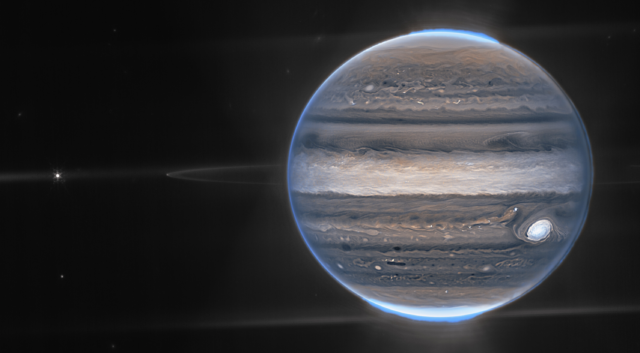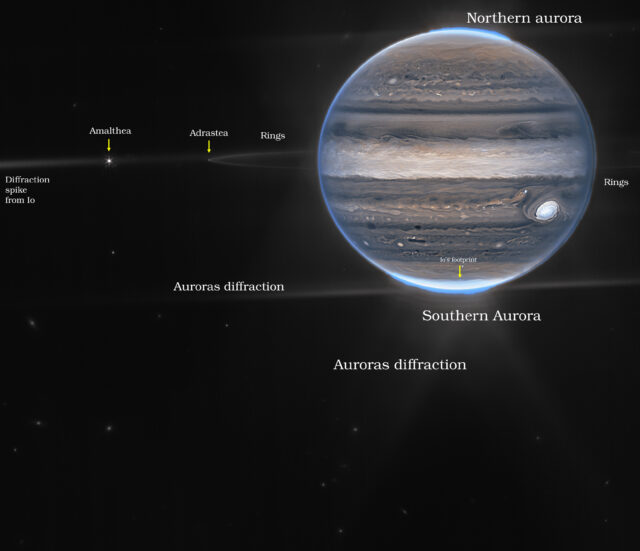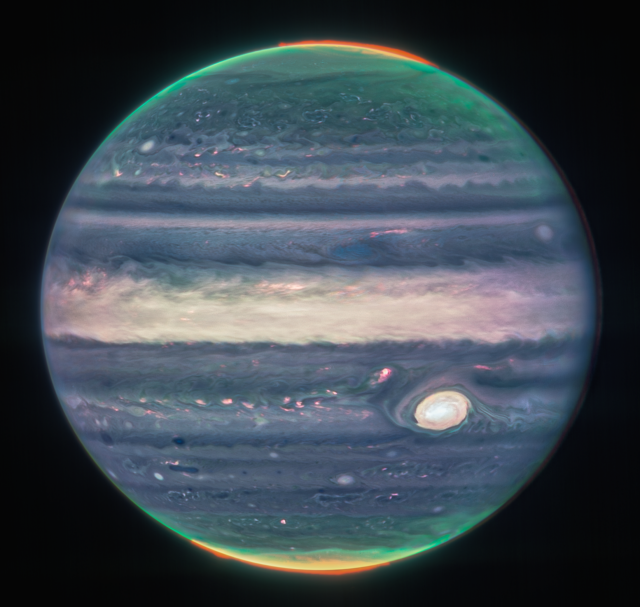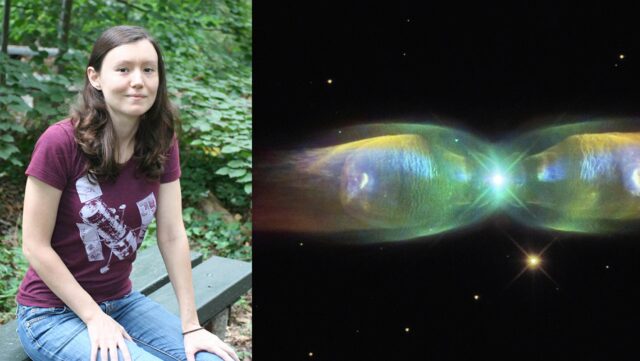[ad_1]

If you’ve been waiting with bated breath for scientists to finally point the James Webb space telescope (JWST) at targets within our own solar system, you’re in good company—and in luck. New images from Webb show Jupiter in jaw-dropping detail. You can see some of the gas giant’s tiny moons, and there are galaxies “photobombing” the bottom of the frame. In fact, the detail is so fine that you can make out the evanescent rings of Jupiter.
Jupiter is a place of incredible extremes. The entire planet is a howling maelstrom of caustic chemicals. Jupiter’s Great Red Spot is a storm within the storm, a gigantic cyclone of Day After Tomorrow proportion. And since the gas giant’s magnetic field is so powerful, probes have little chance of surviving a cheeky dip below the cloud-tops. But the big shiny new James Webb space telescope just came up and running. It’s true that the JWST can gaze into the heart of the cosmos with its ultra-deep zoom. The great observatory can also turn its focus onto objects much closer—for example, just a couple of planets away. This is what the JWST sees with its infrared eye when it looks at Jupiter (below).

In this wide-field view, Webb sees Jupiter with its faint rings, which are a million times fainter than the planet, and two tiny moons called Amalthea and Adrastea. The fuzzy spots in the lower background are likely galaxies “photobombing” the frame. Image: NASA, ESA, Jupiter ERS Team; image processing by Ricardo Hueso (UPV/EHU) and Judy Schmidt
“The brightness here indicates high altitude—so the Great Red Spot has high-altitude hazes, as does the equatorial region,” explained Heidi Hammel, vice president for science at AURA. Hammel is an interdisciplinary Webb scientist for solar system observations. “The numerous bright white ‘spots’ and ‘streaks’ are likely very high-altitude cloud tops of condensed convective storms.” In comparison, the dark ribbons north of Jupiter’s equator have barely any cloud cover.
Webb Captures Jupiter in Exquisite Detail
Because these images were captured in the infrared, they aren’t the same as what a human eye would see. Instead, project scientists get raw data from the telescope’s infrared cameras, which they translate into coherent images by assigning each pixel a color value in the visible spectrum. Here they have colorized the images according to their wavelength. This allows them to sort warmer areas from cooler ones. In the two images of Jupiter above, bluer tones represent shorter wavelengths and higher temperatures, while redder tones represent longer wavelengths and cooler temperatures.

Webb NIRCam composite image of Jupiter from three filters – F360M (red), F212N (yellow-green), and F150W2 (cyan) – and alignment due to the planet’s rotation. Credit: NASA, ESA, CSA, Jupiter ERS Team; image processing by Judy Schmidt.
In this composite view of Jupiter, the colorizing is a little different. Here you can see that auroras extend to high altitudes above the gas giant’s north and south poles, flaring out into space. NASA explains that the auroras shine in a filter that is mapped to redder colors, which also highlights light reflected from lower clouds and upper hazes. A different filter, mapped to yellows and greens, shows hazes swirling around the northern and southern poles. A third filter, mapped to blues, showcases light that is reflected from a deeper main cloud.
Citizen Science For the Win
One more neat thing in a story already full of ’em: A citizen scientist colorized these images. Judy Schmidt, of Modesto, California, collaborated with Ricardo Hueso of the University of the Basque Country in Spain to create the remarkable results you’ve seen here. Schmidt has worked on a number of stellar phenomena, including refining images of Shoemaker-Levy 9’s Jupiter impact, as well as gorgeous images of Minkowski’s Butterfly:

Citizen scientist Judy Schmidt of Modesto, California, processes astronomical images from NASA spacecraft, such as the Hubble Space Telescope. An example of her work is Minkowski’s Butterfly, right, a planetary nebula in the direction of the constellation Ophiuchus. Credit: Judy Schmidt / NASA
NASA has a thriving citizen science program. You don’t need to be a professional astronomer to get involved in planetary science. In fact, the agency invites citizen scientists to join a huge variety of missions, from finding Easter eggs on maps of the Earth and Moon to spotting clouds on Mars or processing and colorizing images like the above. For those curious about Jupiter, NASA also has a mission inviting you—yes, you—to help spot the telltale spirals of storms on Jupiter.
NASA also welcomes anyone and everyone to participate in its Artemis mission to the moon. NASA has already posted a link to the livestream of their upcoming Artemis 1 launch:
https://www.youtube.com/watch?v=6SkLFDypXH0
The Artemis 1 mission is currently scheduled to take off on Aug. 29.
Now Read:
[ad_2]
Source link
